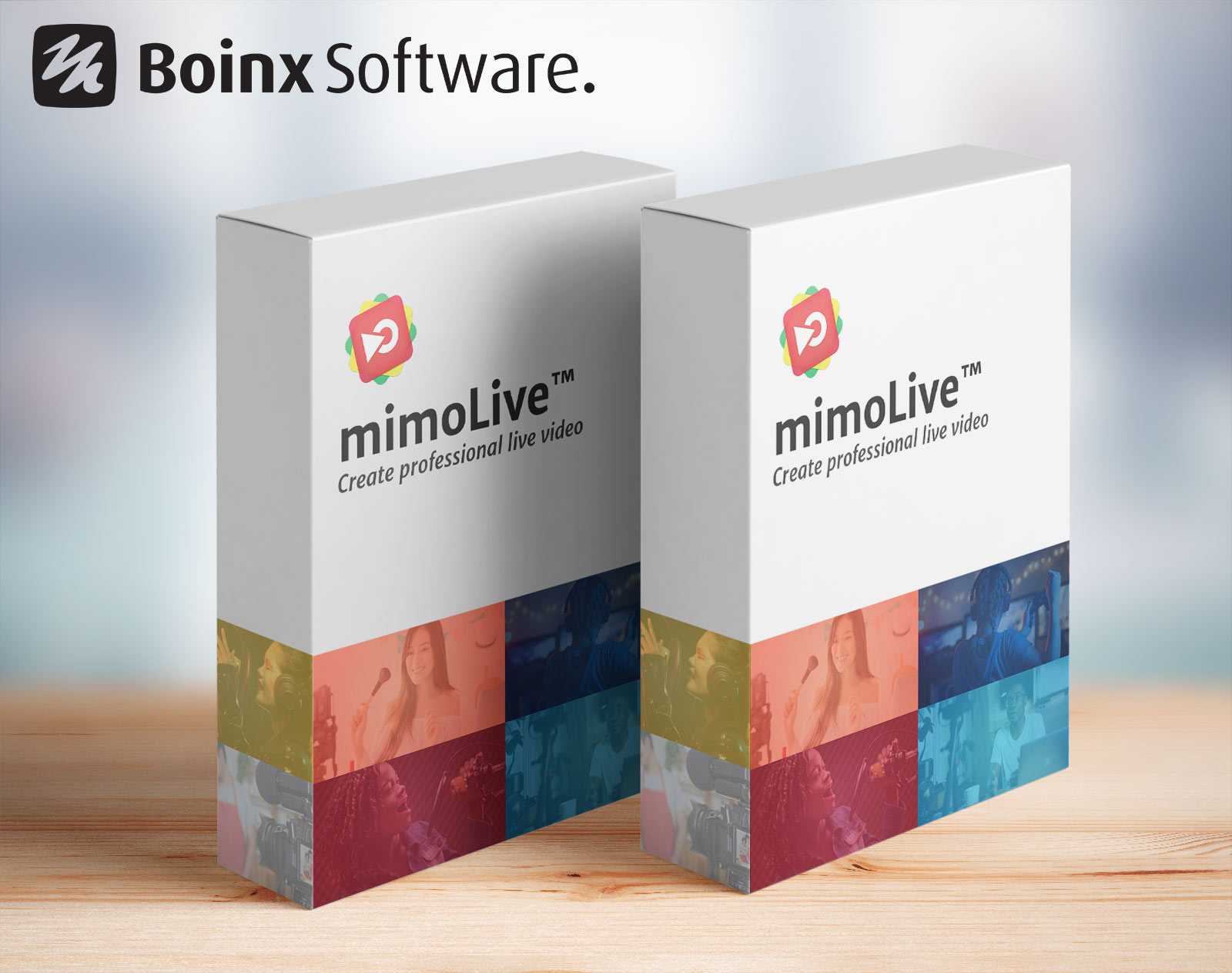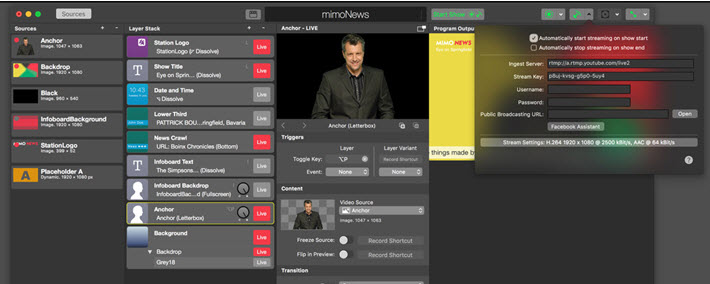MimoLive is the all-in-one video encoder, switcher and streaming software for Mac®. MimoLive enables you to switch multiple cameras, insert presentations, add layered graphics like weather maps, lower-thirds, social media feeds, green screens, and much more. MimoLive streams and records simultaneously to various streaming server and destinations. MimoLive is basically a broadcast studio for your Mac. It now natively integrates with Blackmagic devices, including the UltraStudio Mini ($150.00) and the UltraStudio 4k ($950.00), and Magewell and Epiphan were also specifically mentioned as offering compatible products for those who want more advanced switching capabilities and/or the. In this tutorial, Stefan introduces the new mimoLive Remote Control Surfaces available in mimoLive 2.6 and newer. This feature allows to remote control mimoL.

For those of you who use tools like Wirecast as the centerpiece of a low cost live video production studio, there is a new player on the block. Boinx Software hosted a live stream today that showcased mimoLive, the successor to BoinxTV and the results of months of work in conjunction with a large beta-testing community. MimoLive is basically a broadcast studio for your Mac. It now natively integrates with Blackmagic devices, including the UltraStudio Mini ($150.00) and the UltraStudio 4k (~$950.00), and Magewell and Epiphan were also specifically mentioned as offering compatible products for those who want more advanced switching capabilities and/or the ability to integrate more than four simultaneous video sources.
One of the biggest updates showcased was the addition of a plethora of built-in live streaming options, including:
Mimolive Vs Obs
MimoLive is a multi-in, multi-out live video engine. Your audience loves video. The only problem is - it takes a lot of time and effort to produce. MimoLive live editing allows you to cut down on.

- Wowza
- Any other rtmp streaming server
- YouTube
- nginx
- UStream
Mimolive For Windows
The central element of the mimoLive layout is layers, and in fact the UI looks and operates a lot like Photoshop. Clicking on different elements uncovers extended palettes in a way those who like Adobe products should find intuitive. Sources are selectable on the left and outputs on the right, including the live options listed above plus the ability to record to disk, now with more codecs, including ProRes 422 or 444. 444 supports an alpha channel, so things like lower thirds and graphics maintain their editability after export. The layers are stacked like in Photoshop so that what is above hides what is below. They mentioned there is a third party integration that provides better visibility in the UI down through the layer stack but weren’t able to show this during the demo.
To begin a project, you select a template, choose your dimensions and frame rate, including plenty of options for mobile devices, and then begin working with your layers. Options include graphics like logos and lower thirds, and numerous external elements, including weather layers and Twitter or other social media feeds. One of the cool new features demoed was the new ability to edit many of these elements directly from the preview window–i.e., you can click and drag the lower thirds or logos to size them rather than entering pixel dimension manually like before.

Also new is play-out to an external player like the Blackmagic UltraStudio 4k or your ATEM Television Studio via SDI. This includes motion graphics plus their fill and key signals.
Mimolive Review
Right now, one down side compared to Wirecast is that you can only stream to one destination at a time with mimoLive.
Another change is how licensing works. All licensing is now subscription-based, with pricing that ranges from $19.00/month for personal licenses up to $199.00/month for enterprise usage. They mentioned that this will allow all users to take advantage of the fast update cycles they are planning. Their plans for the product seem ambitious–they even specifically mentioned that they want to support live 360 video with placing of objects in different parts of the “frame.”
One user asked about Integrating Skype and specifically Skype audio, and the presenter indicated this is easily done through a combination of video capture and a virtual audio router to get the audio from Skype into mimoLive
Mimolive Virtual Camera Plugin
For those interested in learning more, the on-demand version of the webcast should be available via the following link:
https://www.youtube.com/watch?v=kdwTTkXOGNI
